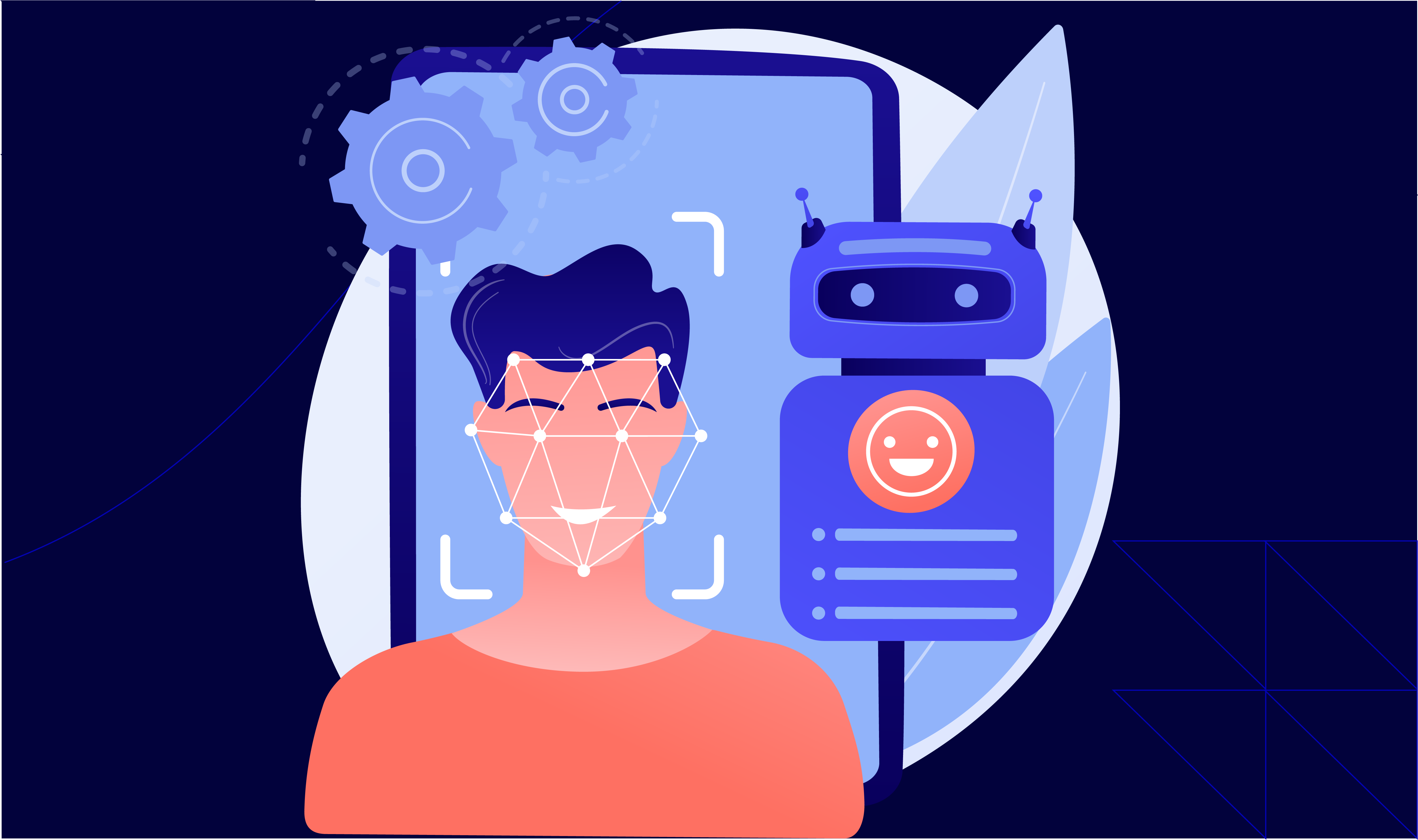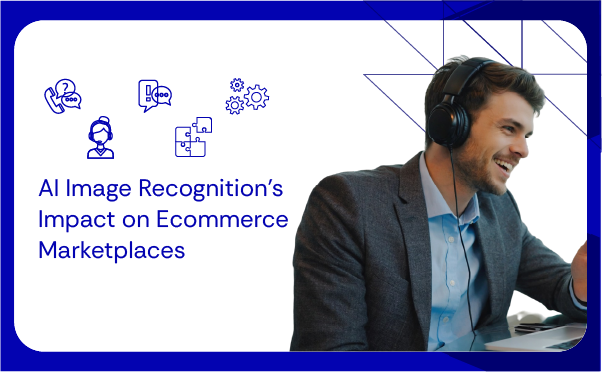AI image recognition is one of the leading developments that the e-commerce market faces today. From driving sales to taking care of brand security, AI tools can take care of all your business needs. For consumer brands and D2C companies operating across the US, UK & Australia, the ability to protect digital assets and deliver consistent brand experiences has become a strategic advantage. The top brands out there use AI image recognition to remove roadblocks to their sales so that their revenue increases unfettered.
Do you want to make things work for you and not get behind all the competition that the modern market offers? Understanding how image recognition enhances customer experience (CX) and brand protection is essential for leaders in Customer Support and Experience roles, such as Senior Managers & VPs.
Not using AI for your business procedures is likely to put you behind your competitors. Read on for a comprehensive guideline on the types of AI image recognition, how they work, and learn about the five most important aspects of this exciting new technology.
What are the Types of AI Image Recognition?

AI image recognition has various components which drive different business functionalities. These are the principal types of AI image recognition:
- Detection of Objects: This feature of image recognition is at work when AI detects a specific object from within an image, or imagines a given object within a set image. Offering up to 99.5% accuracy (as achieved in Atidiv’s AI data solutions), this feature is often used in self-driving cars and security systems.
- Facial Recognition: Comparing facial features of a person in photos enables AI to gain enough data to identify the person in another photo. This feature is commonly used in social media tagging and for surveillance purposes.
- Assigning a Label to Images: AI can distinguish between the different components of a photo and determine the subject. This feature helps sort images or detect defects in manufacturing.
- Optical Character Recognition (OCR): OCR is a lifesaver when it comes to accessing scanned copies of documents. Its recognition of the text characters renders any document editable, which is a major reason why the OCR market is growing at a rate of 13.06%.
- Image Segmentation, Feature Matching and Image Retrieval: AI image recognition is sophisticated enough to distinguish between different segments within an image, making it suitable for medical imaging. Furthermore, its feature-matching abilities help it to find similarities between images and thus reconstruct images with accuracy. This feature is also an allied characteristic that allows for visual image searching that drives e-commerce sales.
What is the Work Procedure of AI Image Recognition?

Let us now take a look at the workflow with which the AI machine learning process is trained:
- A dataset is prepared with images and their respective labelling so that AI can process the data.
- This processing takes place in a neural network, which is a type of logic-run architecture that can recognize images on its own. At this step, the network also establishes the relationship of the image with the rest of the data that it has already processed. This ability helps AI to distinguish between images and reconstruct an image when required.
- Finally comes the testing stage at which unknown images are fed into the system to check whether AI can make out the image based on the knowledge it has gained through processing previous data. The performance of the AI tool determines its level of sophistication at this stage.
Atidiv’s advanced image recognition workflows helped a leading NYC start-up achieve 99% accuracy while cutting costs by 50% and saving 80% of operational time (read the full case study).
What are the 5 Most Important Aspects of AI Image Recognition?

AI image recognition can potentially change the market dynamics fundamentally. Year by year, visual searches have increased by 70% globally. Let us take a look at five such ways in which AI tech will be the principal driving force in the marketplace.
1. Enhanced Visual Search
AI image recognition is efficient in these aspects:
- Searching for a product by image rather than text inputs
- Bringing more efficiency to the search
- Finding the exact product online, which is not always possible with text inputs
- AI-enabled systems can suggest relevant products from search analysis
If someone is searching for a product online with image inputs, they are more than likely serious about investing in the product. Therefore, the conversion rates of these searches are high.
Moreover, AI image recognition is a great tool for catalogue management, which improves as AI gets more accurate with its recognition task. A boost in sales is observed as a result of the image content being effectively optimised for search engines. Leading consumer brands use Atidiv’s AI-backed visual recognition to scale accuracy while maintaining over 95% data quality, see how Atidiv enabled $20M+ in savings and 95%+ quality for a leading business aggregator.
2. Personalised Recommendations
By processing image data, AI can send out personalised recommendations to people, thus driving sales and positively impacting customer satisfaction. If you have a competent social media support team, your brand can make quite an impact on the market with AI tools. For CX and Customer Support leaders, this personalization translates directly into stronger retention and higher customer lifetime value.
If you are a business looking to shoot up sales, you should combine AI tools with Atidiv’s services, such as digital marketing, which claims to increase your conversion rates by 20%. Furthermore, integrated with your website or a social media platform, live chat outsourcing services can make your presence felt among your target audience.
If we look at data, the success of personalised recommendations is nothing short of staggering. Amazon achieves 35% of its sales through personalised recommendations made with the help of its AI tools. The e-commerce giant looks to use the technology in a more entrenched manner in the future to reduce the overall cost of operations and manage the delivery of items more efficiently.
Atidiv’s AI-driven CX and back-office solutions have similarly helped clients achieve up to 65% savings in employee costs (learn more here).
3. Augmented Reality and Virtual Try-on
The online marketplace has been grappling with a roadblock for several years, with items that need inspection before purchase. Before the advent of AI, it had been fairly difficult to convince customers that they are opting for the right size and quality according to their expectations. E-commerce platforms tried to bypass this bottleneck by offering easy returns and replacements, but that was not a direct approach to boost sales.
However, AI-powered image recognition and AR try-on technology now allow brands to offer immersive customer experiences without physical interaction. For instance, online specs businesses have introduced virtual try-on systems. With just your camera on, the e-commerce app would be able to gauge the size of your face and suggest the size of your specs or even the style that would look best on you. Additionally, stunning visuals and interactive features integrated with the e-commerce app make the buying process satisfying. So basically, you can do everything that you could do at a brick-and-mortar store, but without wasting much time and from the comfort of your home. These advanced 3D modelling systems can be used for other sales purposes as well, and will push the market to grow at a CAGR of 26.4% from 2024-30.
4. Brand Protection through Fraud Detection
AI algorithms have been instrumental in picking out details and analysing them strategically to detect online fraudulent activity. They work with the help of
- Machine-learning algorithms
- Image recognition with AI
- Real-time threat detection
This is particularly critical for consumer brands that face risks from counterfeit listings, fake domains and unauthorized product imagery. Atidiv’s AI fraud detection workflows can identify logo misuse and brand impersonation across digital marketplaces, helping companies safeguard reputation and revenue.
Thus, you can now easily defend yourself against dummy websites that make a quick buck by capitalising on the trust that customers have in your brand. Furthermore, customers can also check the authenticity of an e-commerce site by opting for the services of websites that employ AI for the purpose.
With the AI fraud-detection set to grow to 31.69 billion dollars by 2029, and 65% of businesses remaining unprotected against AI-bot fraud, the writing on the wall is clear. AI has dawned a new era in which protection and surveillance are the new normal, and failing to follow these protocols can potentially ruin the reputation of a brand: brand protection is essential.
5. Supporting Autonomous Vehicles
The automobile industry has moved at a very fast rate, enabling it to move from being automatic to autonomous. This leap has been made possible through AI image recognition, which informs the driving mechanisms of the car to trigger the right response concerning the road conditions.
It is through accurate image recognition by AI that these autonomous cars can
- Recognise traffic signals and adhere to the traffic rules
- Detect obstacles and sync its internal driving mechanisms with the time required to avoid ramming into them
- Navigate roads with increased safety with the help of motion sensors that work in tandem with the image sensors
Therefore, with the robust infrastructure of AI image recognition making advances every single day, the market is getting essentially transformed at the same time.
Whether you are a CX leader seeking scalable data accuracy or a D2C brand aiming for visual brand protection, Atidiv’s AI image recognition solutions deliver enterprise-grade precision. By combining automation with human-in-the-loop quality control, Atidiv consistently delivers 98%+ QA scores and measurable ROI for global clients.
FAQs on AI Image Recognition’s Impact on E-commerce Marketplaces
1. How is AI image recognition relevant to the autonomous vehicle industry?
The autonomous vehicles have a futuristic design as they can use AI to navigate through obstacles, respond to traffic lights, or control speed according to road conditions. Performing all these functionalities would not be possible without the ability of AI to understand and recognise real things from the image data it has processed. For instance, if AI recognises a pothole on the road, it will instruct the driving functionality to navigate around it for the passengers’ comfort, just like a human driver would do.
2. Why would I rely on AI for brand or data protection?
The online marketplace is riddled with scammers trying to use others’ reputations to take customers for a ride.AI-powered brand protection tools can identify trademark misuse, fake domains and counterfeit product listings, which help in protecting brand integrity at scale. It does not take much time to earn a bad name in the market, and you do not want it to happen to you for no fault of yours.
3. In e-commerce, how essential is AI image recognition?
A sizeable sales percentage is driven by AI image recognition as an increasing number of customers search for products by image input. The more competent an AI tool is in processing an image and generating an accurate product link in response, the better it is for your business. E-commerce giants are constantly developing AI tools that can improve this function as they are aware of the positive impact it can have on their sales. For brands focusing on CX and customer retention, integrating AI image recognition can directly improve search relevance, personalization and customer satisfaction.

